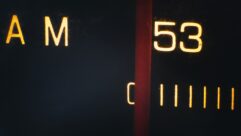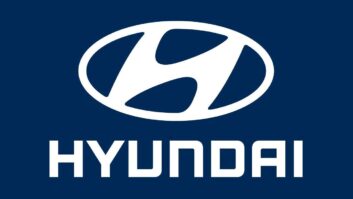
John AndersonThe writer is author of the recently published book “Radio’s Digital Dilemma: Broadcasting in the Twenty-First Century.”
After spending several years assembling the definitive history of HD Radio’s development and proliferation, I’ve learned some uncomfortable truths.
It is indeed true that the system was developed primarily as a gambit to preserve the radio industry’s perceived control over its own destiny. It is also true that industry organizations and the FCC had to perform some substantial convolutions, like actively redefining what “channel” and “interference” mean, to accommodate HD Radio on the public airwaves.
The FCC itself, wholly focused on the economics of policymaking above all else, erroneously interpreted the coalition of HD proponents — a group that controlled the majority of industry revenue in critical alliance with public broadcasters — as industry consensus. And iBiquity’s business model, ripped straight from Microsoft’s playbook, killed any natural enthusiasm most broadcasters might have otherwise had for HD Radio.
Here in the pages of Radio World, there has been a relatively vibrant discussion of digital radio over the last two decades. You can watch the tenor of stories and commentaries evolve over time, from dreamy optimism to anxious skepticism. Now the discourse is horribly polarized: Those who speak highly of HD are all-in and consider its triumph inevitable. Critics of the technology seem to think it’s the End of the World As We Know It — a conspiracy of sorts designed to assimilate all broadcasters under one corporate mothership. Supporters call critics “haters” and “naysayers,” while critics think supporters are “shills” or worse.
Meanwhile, in the quarter-century since Project Acorn took root, the very definition of what radio itself is has been fundamentally transformed, and there’s a lot of collective handwringing about what that means. One thing is clear: HD Radio is not the primary avenue by which broadcasting will make its digital transition.
By this point, you’ve probably labeled me an HD hater or naysayer.
But you’re wrong: I love radio and have been involved in broadcasting since I was 15. That love transcends your industry. When it comes to HD Radio, what I am most concerned about is the malaise that surrounds it, and how that malaise actively interferes with radio’s digital transition more broadly.
Whether you are a lover or hater, you can’t ignore the malaise, and nobody’s happy with the status quo.
In my book, I highlight three possible avenues for change.
COMMIT TO MAKING HD RADIO “WORK”
The IBOC transmission system is built on a series of compromises that dramatically limits its attractiveness and utility. The fact that it works at all is a significant accomplishment in and of itself. Some of these compromises might be rectified in HD’s all-digital mode — but even then, nobody expects a quantum leap. Other compromises can be wholly reversed today. For example, iBiquity’s business model is not a force of nature, and has strangled innovation.

Making HD Radio “work” could mean many different things. It might mean committing to an all-digital transition, because marketplace forces alone are not working. It might mean reconfiguring the primary motive of HD to prioritize meaningful functionality over chimerical profitability. It might also mean considering technological tweaks to the system that exist outside of iBiquity’s black box.
Regardless, any efforts in this direction must be built on open and transparent collaboration — the past practice of closed-door testing and deliberation among select industry and regulatory players has produced bad science and bad blood. If the hottest fire makes for the strongest steel, then HD proponents should embrace creative thinking and a wider discourse. What is there to lose?
CONSIDER ALTERNATIVE DIGITAL BROADCAST TECHNOLOGIES
In the FCC’s ongoing AM revitalization initiative, a surprising number of commenters suggested the agency consider Digital Radio Mondiale as a digital broadcast system alternative. DRM faces many implementation challenges of its own, and does not offer a hybrid mode. But it does provide a qualitative improvement to analog broadcasting that HD struggles with, and comes with no silly licensing-baggage attached.
The stated position of the FCC is to deny that HD alternatives even exist, and HD proponents would perceive any sharing of spectrum with another system as dangerous balkanization that diminishes their investments. But this is not the 1980s and AM stereo all over again; interoperable digital radio transmitters and receiver chips exist. Countries in Europe that began their digital radio transition with DAB but are now moving to DAB+ have figured out the retrofit process. Such a consideration need not be the death knell of HD Radio — it could be just the sort of competitive jolt the system needs.
PREPARE TO CEDE THE PUBLIC AIRWAVES
There’s no guarantee that AM and FM radio will exist indefinitely.
Just ask television broadcasters: Today, the value of DTV spectrum as a medium for something other than broadcasting supersedes its legacy use, which is why the FCC seeks to reclaim wide swaths of it. This is not some radical notion from the ivory tower: in 2011, NAB President/CEO Gordon Smith told Radio World that while there was no immediate similar threat to radio, “If they can do it to your neighbor, they can do it to you eventually.”
New technologies and networks simply cannot replicate the intimacy, immediacy and reach of broadcasting; yet its potential diminution has implications that most futurologists, enamored with the new, haven’t fully grasped. Better to control that evolution than to suffer it because of bad strategic decisions made a long time ago.
I attended the Radio Show in Indianapolis in hopes of having some interesting conversations on the future of radio and its digital transition. I’m not interested in perpetuating the love/hate dichotomy. I come in peace. And I’m as curious and concerned about the future of radio as you are. Let’s brainstorm.
Comment on this or any story. Email [email protected] with “Letter to the Editor” in the subject field.
John Anderson is the director of broadcast journalism at Brooklyn College, City University of New York. His book “Radio’s Digital Dilemma: Broadcasting in the Twenty-First Century” is published by Routledge. A former radio journalist with both commercial and noncommercial experience, he’s been writing on issues of broadcast policy and activism since 1997 athttp://diymedia.net.












